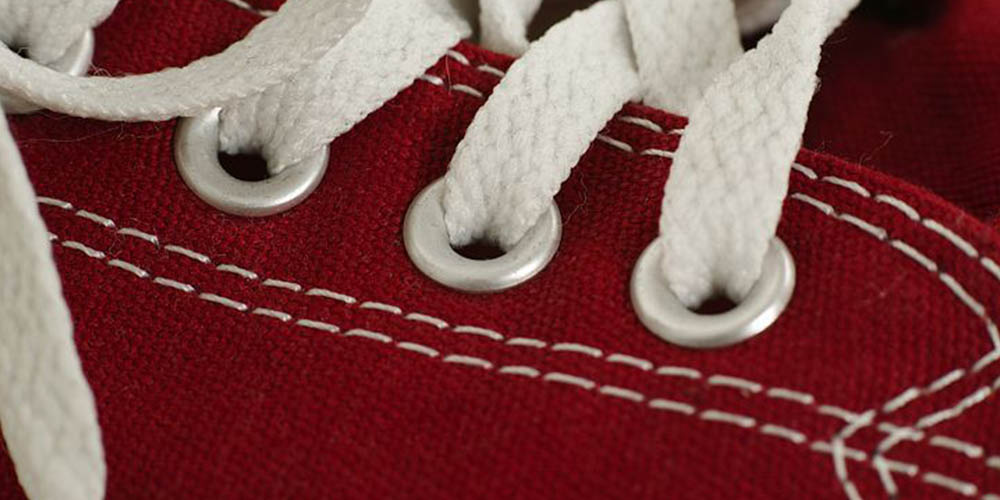Patients with Diabetes Can Save Your Toes, Feet and Amputation
Allen Croat said if he had only purchased the proper shoes when first diagnosed 17 years ago with Type 2 Diabetes, he might have been spared having two toes amputated.
Ten years ago, Croat, 63, had the big toe on his right foot amputated. In December, Croat had the second toe on his right foot severed. He relies on a cane to walk and custom inserts to protect his gnarled feet.
It all started when he was walking barefoot in the house and stubbed his toe. It was a lesson learned the hard way.
“Your feet are the most important aspect of your life,” Croat said in a telephone interview. You only get one set. If I had known then what I know now, I would have worn diabetic shoes immediately.”
He is one of thousands who have lost limbs and/or digits due to diabetes. In 2010 alone, about 73,000 diabetics, ages 20 or older, underwent lower-limb amputations, according to the American Diabetes Association.
Croat, who lives in Sioux Falls, S.D., is speaking out to help educate other diabetics on the importance of choosing the appropriate shoes, sooner than later after being diagnosed.
An estimated 1.4 million Americans are diagnosed with diabetes every year, according to the American Diabetes Association.
One of the biggest casualties of diabetes is the feet, Roy H. Lidtke, doctor of podiatry, said in a telephone interview with HealthCenral. Diabetes can impede both circulation and cause nerve damage in the feet. Poor circulation can cause wounds, such as sores and blisters, to heal more slowly, increasing the risk that the feet or digits will become infected, Dr. Lidtke said. Diabetics with nerve damage can also lose feeling in their feet. They could walk on a razor blade and not feel it. They also might not feel cold or heat, making shoes a critical part of a diabetic’s wardrobe.
“Finding the right fit is most important,” said Dr. Lidtke, who practices at St. Luke’s Hospital in Cedar Rapids. “It’s not always easy and it takes someone with a lot of experience.”
If you have neuropathy, or diabetic nerve damage, you might not be able to tell if a shoe is too tight, so seek expert help, not someone who “dabbles” in diabetic shoe sales, Dr. Lidtke said.
To find a shoe store in your area with certified shoe fitters or certified pedorthists on staff, turn to The American Board of Certification in Orthotics, Prosthetics & Pedorthics at www.abcop..org.
Make sure you get your foot measured by someone who uses the Brannock Device, Dr. Lidtke said. You most likely will remember it from your childhood. It measures the width of the foot, the length of the foot and arch length. The best time to shop for shoes is at the end of the day.
When shopping for shoes, Michael W. Seiberg, doctor of podiatry in Rancho Mirage, Calif., ticked off a list during a telephone interview of what to look for in a quality shoe. Dr. Seiberg, who works for Desert Orthopedic Center, specializes in diabetic foot care and wound care.
His must-have list in specialty shoes and foot care includes:
- Deep toe box: The toe box, or front of the shoe that covers the toe should give you wiggle room, literally. It should be spacious enough so you can wiggle your toes and long enough so your toes do not rub against the front of the shoe. While it should be wide enough so it does not pinch your foot, it should not be so wide so your foot slides around inside.
- Lace-up or Velcro: If you use a certified specialist to help measure your foot, you should get a good fit right, but laces and Velcro give you some flexibility to adjust as you wear the shoes.
- Throat: This is where your foot slips into the shoe. It should be well-padded at the top, or the rim and low so it does not rub, causing friction against your anklebones.
- Socks: Quality diabetic socks absorb sweat and moisture, helping to reduce the risk of infection. They are also designed not to restrict the foot and therefore promote circulation.
- Quality slippers: Diabetics with foot neuropathy should not walk barefoot. It is paramount they wear shoes or slippers at all times to avoid rocks, glass and other debris that could cause an infection.
“Where you and I would normally have pain and say, “Ow,” if we stepped on a pebble or worse, diabetics with foot neuropathy cannot feel that,” Dr. Seiberg said. “They might have sores or cracks and in the skin and not even realize it’s an issue.”
While it is critical for diabetics to wear quality shoes that fit, Dr. Lidtke added that it is equally important to know what shoes not to wear. They include:
- Sandals: Straps can irritate the foot and debris and small pebbles can easily get under the foot inside the sandal.
- High heels: They are known for causing callouses, blisters and ulcers. He recommends a heel less than one inch high.
- Slip-on loafers: They do not provide adequate support and only a small part of the shoe actually covers the foot.
Shoes should be stretchable, breathable, and stiffer to limit excessive motion inside the shoe, Lidtke said.
“The best way to think of it is, like Duct-taping a pillow to your foot,” Lidtke said.
One of the biggest possible impediments to buying specialist shoes, especially for those living on a fixed income, is sticker shock. A pair of specialty shoes can cost as much as $350, as in Allen’s case, or more.
Diabetics with Medicare and Medicare Part B may qualify for full or partial payment. In Croat’s case, he had no out-of-pocket cost.
Patients should not only learn about the medical aspects of diabetes but also understand how to protect themselves financially.
Your doctor can advise you on possible Medicare coverage.
“If I had gotten shoes right away and known, I would never have been in stocking feet that day I stubbed my toe,” Croat said as we finished our telephone interview. “I might still have my toes.”
Allen Croat said if he had only purchased the proper shoes when first diagnosed 17 years ago with Type 2 Diabetes, he might have been spared having two toes amputated.
Ten years ago, Croat, 63, had the big toe on his right foot amputated. In December, Croat had the second toe on his right foot severed. He relies on a cane to walk and custom inserts to protect his gnarled feet.
It all started when he was walking barefoot in the house and stubbed his toe. It was a lesson learned the hard way.
“Your feet are the most important aspect of your life,” Croat said in a telephone interview. You only get one set. If I had known then what I know now, I would have worn diabetic shoes immediately.”
He is one of thousands who have lost limbs and/or digits due to diabetes. In 2010 alone, about 73,000 diabetics, ages 20 or older, underwent lower-limb amputations, according to the American Diabetes Association.
Croat, who lives in Sioux Falls, S.D., is speaking out to help educate other diabetics on the importance of choosing the appropriate shoes, sooner than later after being diagnosed.
An estimated 1.4 million Americans are diagnosed with diabetes every year, according to the American Diabetes Association.
One of the biggest casualties of diabetes is the feet, Roy H. Lidtke, doctor of podiatry, said in a telephone interview with HealthCenral. Diabetes can impede both circulation and cause nerve damage in the feet. Poor circulation can cause wounds, such as sores and blisters, to heal more slowly, increasing the risk that the feet or digits will become infected, Dr. Lidtke said. Diabetics with nerve damage can also lose feeling in their feet. They could walk on a razor blade and not feel it. They also might not feel cold or heat, making shoes a critical part of a diabetic’s wardrobe.
“Finding the right fit is most important,” said Dr. Lidtke, who practices at St. Luke’s Hospital in Cedar Rapids. “It’s not always easy and it takes someone with a lot of experience.”
If you have neuropathy, or diabetic nerve damage, you might not be able to tell if a shoe is too tight, so seek expert help, not someone who “dabbles” in diabetic shoe sales, Dr. Lidtke said.
To find a shoe store in your area with certified shoe fitters or certified pedorthists on staff, turn to The American Board of Certification in Orthotics, Prosthetics & Pedorthics at www.abcop..org.
Make sure you get your foot measured by someone who uses the Brannock Device, Dr. Lidtke said. You most likely will remember it from your childhood. It measures the width of the foot, the length of the foot and arch length. The best time to shop for shoes is at the end of the day.
When shopping for shoes, Michael W. Seiberg, doctor of podiatry in Rancho Mirage, Calif., ticked off a list during a telephone interview of what to look for in a quality shoe. Dr. Seiberg, who works for Desert Orthopedic Center, specializes in diabetic foot care and wound care.
His must-have list in specialty shoes and foot care includes:
- Deep toe box: The toe box, or front of the shoe that covers the toe should give you wiggle room, literally. It should be spacious enough so you can wiggle your toes and long enough so your toes do not rub against the front of the shoe. While it should be wide enough so it does not pinch your foot, it should not be so wide so your foot slides around inside.
- Lace-up or Velcro: If you use a certified specialist to help measure your foot, you should get a good fit right, but laces and Velcro give you some flexibility to adjust as you wear the shoes.
- Throat: This is where your foot slips into the shoe. It should be well-padded at the top, or the rim and low so it does not rub, causing friction against your anklebones.
- Socks: Quality diabetic socks absorb sweat and moisture, helping to reduce the risk of infection. They are also designed not to restrict the foot and therefore promote circulation.
- Quality slippers: Diabetics with foot neuropathy should not walk barefoot. It is paramount they wear shoes or slippers at all times to avoid rocks, glass and other debris that could cause an infection.
“Where you and I would normally have pain and say, “Ow,” if we stepped on a pebble or worse, diabetics with foot neuropathy cannot feel that,” Dr. Seiberg said. “They might have sores or cracks and in the skin and not even realize it’s an issue.”
While it is critical for diabetics to wear quality shoes that fit, Dr. Lidtke added that it is equally important to know what shoes not to wear. They include:
- Sandals: Straps can irritate the foot and debris and small pebbles can easily get under the foot inside the sandal.
- High heels: They are known for causing callouses, blisters and ulcers. He recommends a heel less than one inch high.
- Slip-on loafers: They do not provide adequate support and only a small part of the shoe actually covers the foot.
Shoes should be stretchable, breathable, and stiffer to limit excessive motion inside the shoe, Lidtke said.
“The best way to think of it is, like Duct-taping a pillow to your foot,” Lidtke said.
One of the biggest possible impediments to buying specialist shoes, especially for those living on a fixed income, is sticker shock. A pair of specialty shoes can cost as much as $350, as in Allen’s case, or more.
Diabetics with Medicare and Medicare Part B may qualify for full or partial payment. In Croat’s case, he had no out-of-pocket cost.
Your doctor can advise you on possible Medicare coverage.
“If I had gotten shoes right away and known, I would never have been in stocking feet that day I stubbed my toe,” Croat said as we finished our telephone interview. “I might still have my toes.”
Editor’s Note: This article first appeared on HealthCentral.com.







